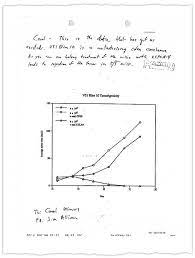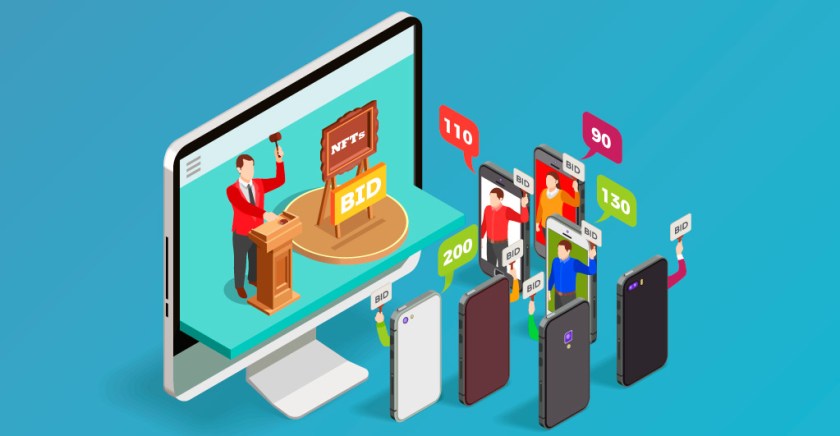Sale of a digital limited edition associated with the development of a Nobel Prize recognized cancer-fighting invention, a precursor to the patent, may provide businesses, universities and investors a lucrative new market for generating income.
The expression of a rather dry invention disclosure from a former UC Berkeley researcher, effectively a limited digital edition of the original, is being monetized through the sale of blockchain traded NFT, or Non Fungible Token.
NFTs enable the sale and market pricing of digitally-configured collectibles that can be traded on a distributed ledger or blockchain. An NFT is the digital version of a certificate of authenticity, embodied in the blockchain.
Blockchains are said to provide pricing transparency that other trading platforms do not, eliminating brokers and assuring buyers of the best available price.
Barely a few months old, the growing size and pace of NFT sales are proving that there is a market for almost anything, especially the right collectibles, whether or not demand is sustainable. This includes basketball highlights and burned paintings.
Why should famous invention disclosures be any different from a limited digital edition of an iconic Lebron James dunk (see Top Shot, “officially licensed digital collectibles”), a rendition of a tweet from Twitter founder Jack Dorsey, or a deliberately maimed Bansky painting called ‘Morons (White)’.
A blockchain company, Injective Protocol, bought the $95,000 Banksy artwork, CBS News reported on March 4, burned it and broadcast the event live on Twitter, as part of a process to turn an aspect of the work into an NFT. The company is gambling that sale of the digital snapshot of the infamously altered work will be worth more than the intact painting itself. In fact, the painting may now worth more as a result of the publicity. Only the market knows for sure.
The alchemy of NFTs can turn the cool documentation associated with an IP-related asset into a hot collectable. An NFT can transform a social media-propelled icon associated with an achievement, discovery or event into a collectible whose value, much like modern art, is somewhat capriciously tied to both history and a degree of hype.
“An NFT can transform a social media-propelled icon associated with an achievement, discovery or event into a digital collectible whose value, much like modern art, is somewhat capriciously tied to both history and a degree of hype.”
To be clear, NFTs do not typically confer any intellectual property rights on the owner; not partial patent or copyright ownership, or any licensing rights. They are simply an artifact of those rights. NFTs may encourage a desire to own IP rights but they remain simply a certified digital moment in time, bounded by code, and packaged as a limited edition collectible that under the right conditions may appreciate over time.
June 2 Auction
UC Berkeley is offering for sale as an NFT the invention disclosure for a 1996 invention that inspired a Nobel Prize for James P. Allison, then a professor at UCB, for his work in cancer, “Blockade of T-Lymphocyte Down-Regulation Associated with CTLA-4 Signalling.”
James P. Allison, then a professor at UCB, for his work in cancer, “Blockade of T-Lymphocyte Down-Regulation Associated with CTLA-4 Signalling.”
“The university hopes that potential bidders will be attracted to an early description of a revolutionary approach to treating cancer,” reports The New York Times. “[Allison] found a way to turn off the immune system’s aversion to attacking tumors and he showed that it worked in mice.
The Berkeley disclosure form could be thought of as the scientific equivalent of Mickey Mantle’s rookie baseball card — a memento of the beginnings of greatness.
A 24-hour auction of the NFT of Dr. Allison’s invention disclosure will take place as early as June 2 using Foundation, an NFT auction marketplace that uses Ethereum, the cryptocurrency network of choice for NFT collectors.
Eighty-five percent of the proceeds will go to Berkeley to finance research, the remainder to Foundation. If the piece is later resold, Berkeley will receive 10 percent of the sale and Foundation 5 percent.
‘Represents Something Magnificent’
“Someone might ask, ‘Why would I want a digital version of some internal university form?’ Because it represents something magnificent,” said Rich Lyons, UC Berkeley’s chief innovation & entrepreneurship officer told Berkeley News.
“There are people who recognize and care about symbols of great science, and even if they never intend to resell the NFT, they want to own it and they want resources to go back to Berkeley, where the basic research behind these Nobel Prizes came from, to support further research.”
In coming weeks Berkeley plans to offer the invention disclosure describing the CRISPR-Cas9 gene editing invention of Jennifer Doudna, who received the 2020 Nobel prize in Chemistry with Emmanuelle Charpentier of the Max Planck Institute. CRISPR may very well be the most important invention since the transistor and the greatest medical breakthrough of our age.
In recent months digital code for Twitter founder Jack Dorsey’s first tweet sold for $2.9 million. In March, an NFT of a collage of images by the artist known as Beeple sold for $69.4 million.
Legal Question
Can an NFT be created from an IP right or other asset owned by a different entity or individual? E.g. Could Stanford have created the NFT for the Allison invention disclosure owned by Berkeley, but whose related patent they do not have a license to practice?
That may depend more on copyright than patent law.
“Someone who creates an NFT using someone else’s work should ensure they have permission from copyright owner,” says lawyer Moish E. Peltz. “Copyright law provides a ‘bundle of rights’ which are exclusive to the owner of the copyright in a work. These rights include the right to reproduce, prepare derivatives, distribute copies, publicly perform, and publicly display.”
At the end of the day, an NFT is simply a digitally expressed limited edition related to a work, asset or event but ultimately separate from it it. Transactions over the coming months will determine just how separate.
Image source: coinnewsspan.com; nytimes.com


One comment